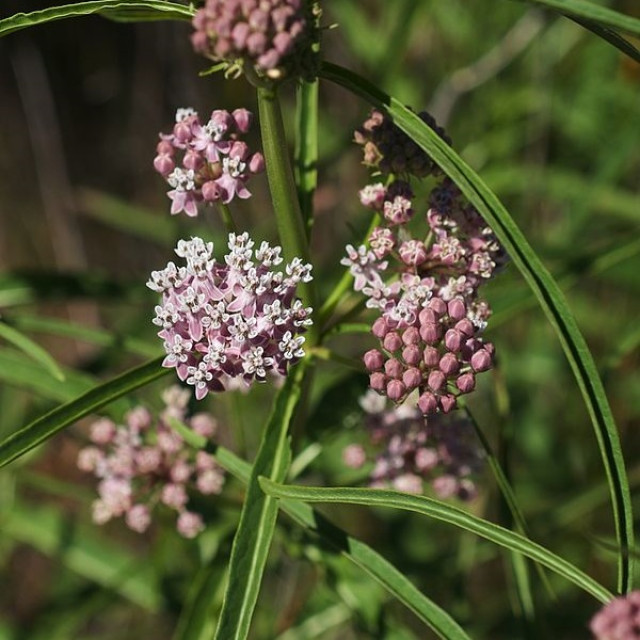COMMON NAME
Mexican whorled milkweed
SCIENTIFIC NAME
Asclepias fascicularis
ALSO KNOWN AS
Narrowleaf milkweed
Plant family
Dogbane (Apocynaceae)
Plant group
Wildflowers and Herbs
Mexican whorled milkweed is a 1-3 feet tall herbaceous perennial with many stems growing upright.
8 reports
8+
OBSERVERS
8+
OBSERVATIONS
Identification hints
Mexican whorled milkweed has a distinct appearance with its slender stems and very long and narrow leaves, lending this plant one of its common names.
Did you know?
Mexican whorled milkweed is the most widespread species of milkweed in California. Dead stems of this plant are used by orioles for nests.
DISTRIBUTION IN TH U.S.
California
,
Idaho
,
Nevada
,
Oregon
,
Utah
,
Washington
HABITAT
This milkweed is found in dry to moist soil in open, sunny areas such as valley grasslands, wetland-riparian areas, and clearings within pine forests.
ATTRIBUTES
Leaves
Leaves of Mexican whorled milkweed are distinctly long and narrow (up to 6" long and 3/4" wide) and occur in whorls of 4 along the stem. The leaf margins typically fold upward, making the leaves appear boat-shaped, or like a "V" in cross-section.
Flowers
The flowers are arranged in 4-5" wide clusters that are held upright. The clusters are dense with at least 20 flowers that are individually less than 1/4" wide. The horns and hoods are greenish-white, while the petals are usually tinged with pink or purple and bent downwards.
Fruits
The fruit of Mexican whorled milkweed is a seedpod that opens along one side (follicle). It's smooth, long and slender, becoming brown when ripe. The flat oval-shaped seeds have a tuft of silky white hair attached.
Bloom Time
Blooms June to September.
See Menu
- 2021 Chicago Botanic Garden. All Rights Reserved.
-
Creative Commons
BY-NC-SA 4.0 - Terms of Use
- Privacy Policy
- Data Sharing and Citation Policies
- 2021 Chicago Botanic Garden. All Rights Reserved.



